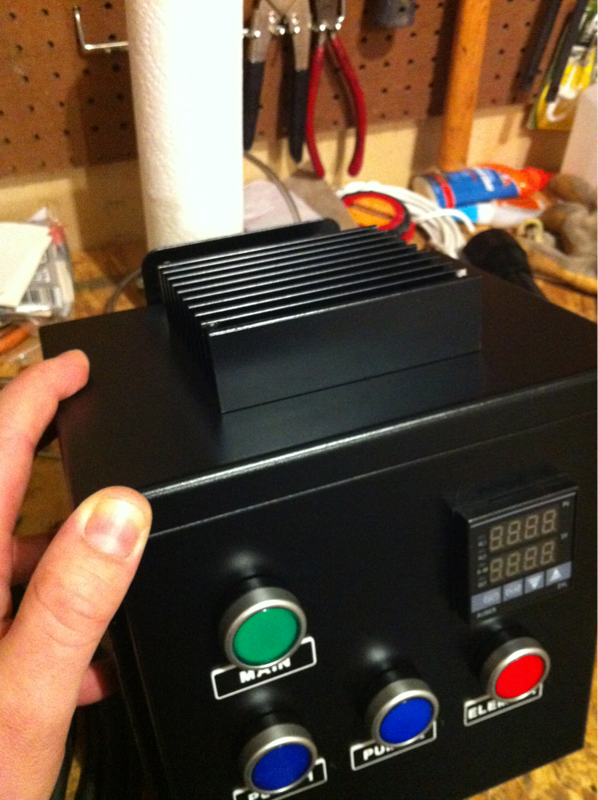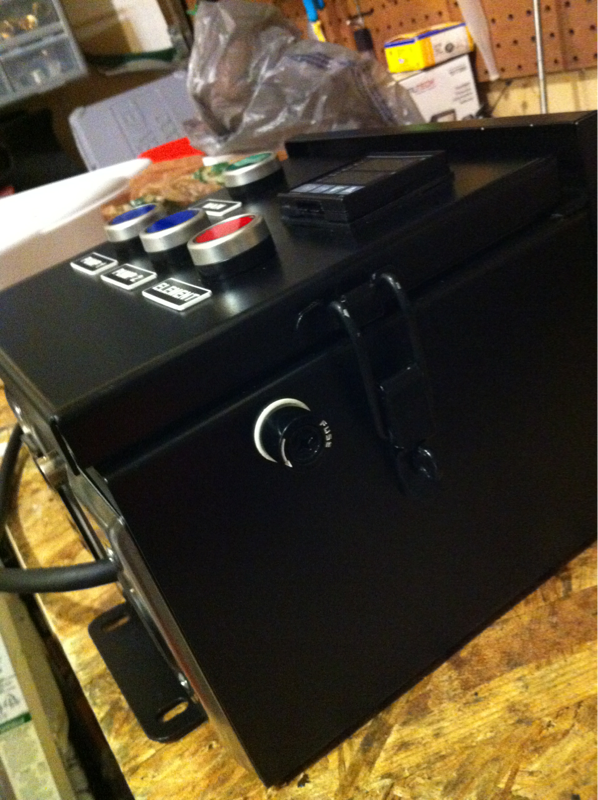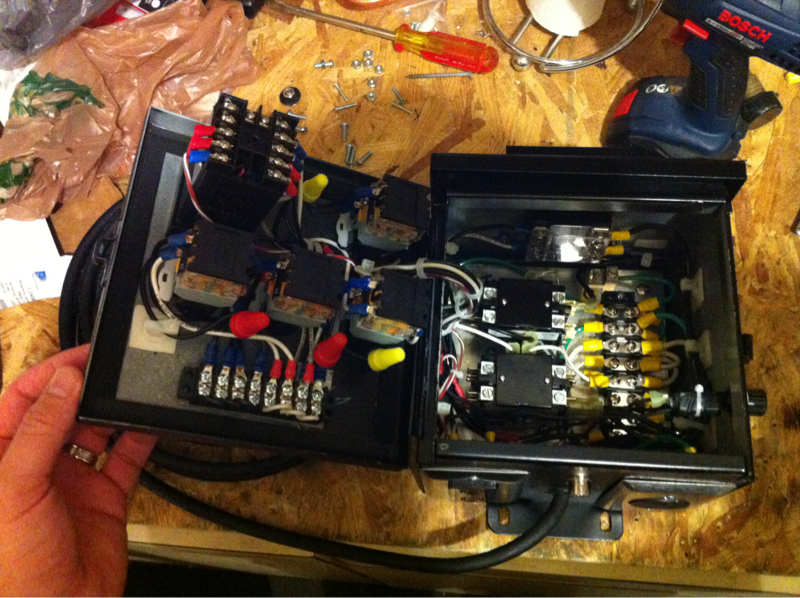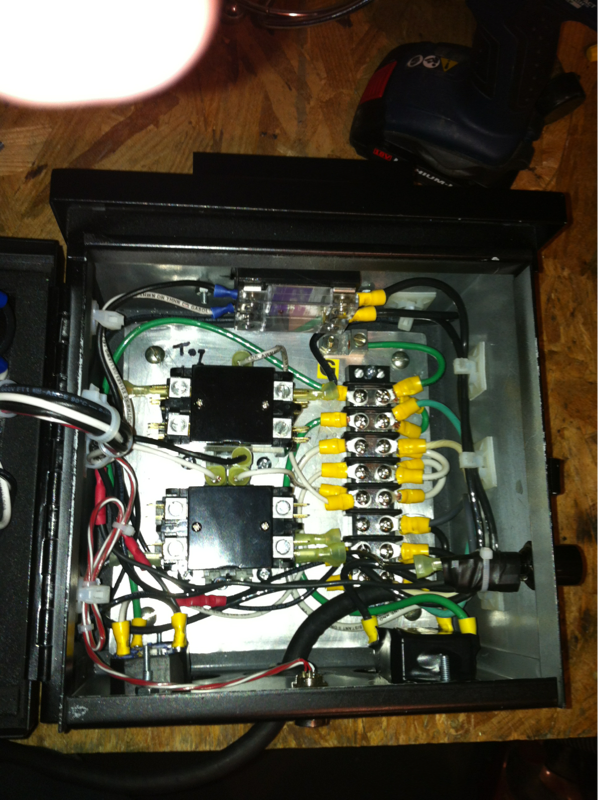EvilBrewer
Well-Known Member
Thanks a lot to everyone who helped me out and answered my questions as I fumbled my way through building this thing. The control panel itself is not extremely unique; I drew most of my inspiration from the posts of others who had done something similar. That's the main reason I'm posting my results ... seeing what others had done was a HUGE help to me.
I haven't brewed with it yet, but everything works as intended. Need to hook it all up and do some more tests...very excited for the first brew day!
First off, this is the wiring diagram that I used as a reference; I actually grabbed this diagram from another post; it was created by P-J...to whom I say thank you very much...this was extremely useful. My actual wiring is slightly different in that I have 2 pumps, and I also didn't switch my neutral lines. But the hot lines are switched as indicated in the diagram...and I wired the PID's output to the SSR as in the diagram such that the element won't get any power unless Pump 1 is on:

Here's the final shot...HUGE thanks to The Electric Brewery for the design inspiration:

Heat sink mounted on the top (again, hats off to The Electric Brewery for the idea!):

Outlets for pump 1, pump 2, and the heating element; input for temperature probe:

1 amp fuse on the power supply to the PID (the PID is an Auberins SYL-2352):

Shot of all the wiring. Just slightly more organized than a rats nest, but I'm pretty happy with it...I figure it's not too bad for a first timer:

Closer shot of the wiring inside the box:

Closer shot of the wiring on the inside of the door:

Cheers.
I haven't brewed with it yet, but everything works as intended. Need to hook it all up and do some more tests...very excited for the first brew day!
First off, this is the wiring diagram that I used as a reference; I actually grabbed this diagram from another post; it was created by P-J...to whom I say thank you very much...this was extremely useful. My actual wiring is slightly different in that I have 2 pumps, and I also didn't switch my neutral lines. But the hot lines are switched as indicated in the diagram...and I wired the PID's output to the SSR as in the diagram such that the element won't get any power unless Pump 1 is on:

Here's the final shot...HUGE thanks to The Electric Brewery for the design inspiration:

Heat sink mounted on the top (again, hats off to The Electric Brewery for the idea!):

Outlets for pump 1, pump 2, and the heating element; input for temperature probe:

1 amp fuse on the power supply to the PID (the PID is an Auberins SYL-2352):

Shot of all the wiring. Just slightly more organized than a rats nest, but I'm pretty happy with it...I figure it's not too bad for a first timer:

Closer shot of the wiring inside the box:

Closer shot of the wiring on the inside of the door:

Cheers.


